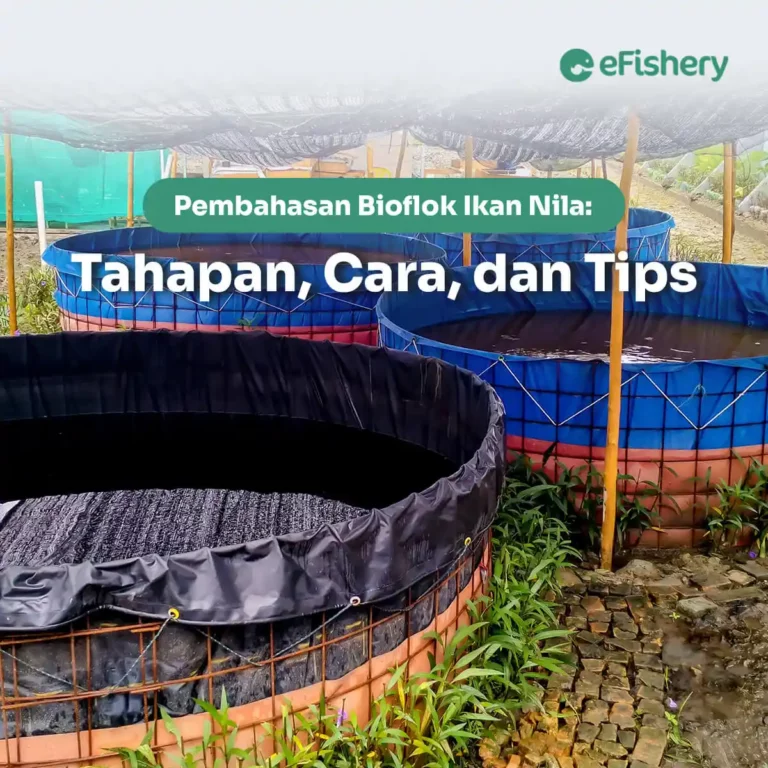The tilapia biofloc cultivation system is one of the cultivation systems often used by Indonesian farmers. Many cultivators use the tilapia biofloc cultivation system because this system is able to make efficient use of feed, increase aquaculture productivity, and minimize water use.
Are you curious about the other benefits of the tilapia biofloc system and how to do it? Read more in this article!
Apa itu Sistem Bioflok?
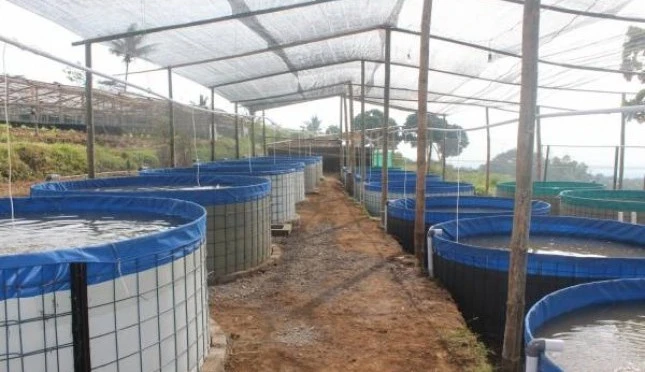
Biofloc comes from the word "bios" which means life, and "floc" which means lump. Biofloc itself is a fish farming system using environmental engineering techniques that rely on oxygen supply and utilization of microorganisms. The biofloc system will combine organic and inorganic compounds consisting of carbon, oxygen, hydrogen, nitrogen, fish waste and feed residue which will form biofloc.
Biofloc is formed by stirring organic matter in water to stimulate the development of aerobic heterotrophic bacteria. The tilapia biofloc technique will only work if the oxygen content in the water is sufficient.
The biofloc technique has long been well-known among catfish and tilapia cultivators because it can boost crop productivity. The biofloc technique is also considered to be very efficient at saving cultivation costs because it does not require a large pond and a lot of water.
Benefits and Advantages of the Biofloc System for Tilapia Cultivation
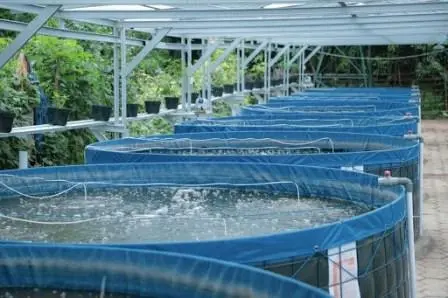
Bioflok yang terbentuk dari kumpulan bahan-bahan organik dapat menstabilkan pH air kolam bioflok nila dan menurunkan kadar amonia di air.
This is beneficial because the high ammonia content will poison the tilapia. If the ammonia has poisoned the tilapia, the chances of the fish surviving will be low.
Selain itu, sistem bioflok juga bisa meningkatkan Survival Rate (SR) ikan dan memperkecil angka Feed Conversion Ratio (FCR) karena bioflok dapat mengubah kotoran ikan menjadi pakan ikan.
Not without reason, the biofloc technique is called a very cost-effective technique because stocking density of tilapia using the biofloc system up to 120 heads/m³ or 10 times the usual technique. This means that this system can save you expenses for pond land and water.
Tilapia cultivated using the biofloc technique only takes 2-4 months to harvest because it grows faster. You also don't need to change the biofloc fish pond water too often because the fish waste will be eaten by good bacteria which will later be recycled into feed. Very environmentally friendly, right?
Weaknesses of the Tilapia Biofloc System
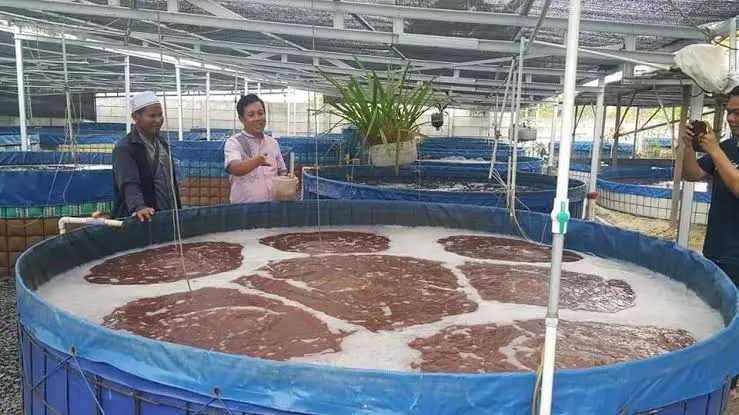
Apart from the advantages and benefits, you must also pay attention to the weaknesses of the biofloc system to anticipate things that can harm cultivation. One of the weaknesses of the biofloc system is the electricity that must always be turned on.
To increase the oxygen content in the water, the pond needs an aerator. When the aerator stops, what is in the water is nitrate, not oxygen. This will turn the water into acid.
If you want to cultivate tilapia using the biofloc technique, you must be more careful and diligent in controlling nitrate levels, pH, and the amount of biofloc. High nitrate content and non-neutral pH of the water will be very harmful to tilapia.
This biofloc technique cannot be used in ponds that are based on soil because the soil properties will interfere with the composition of the biofloc material. Ground pools will also absorb water so that the water content of the pool will decrease because the water will rarely be replaced. If you want to cultivate tilapia using the biofloc technique, you can use cement or tarpaulin ponds.
How to Cultivate Tilapia with the Biofloc System
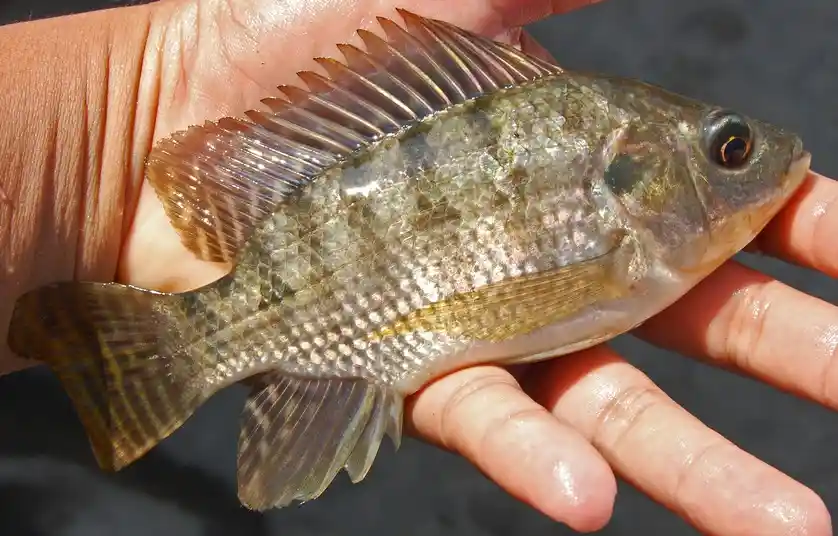
After knowing what biofloc is and its advantages and disadvantages, it's time for you to know how to cultivate biofloc tilapia. Watch the following steps!
1. Pool and Water Preparation
For tilapia cultivation using the biofloc technique, you should use a round pond. Round ponds are considered better for high density of seed stocking because the oxygen content in the water will be spread more evenly.
Prepare a round pond with a diameter of 3 m and a depth of 2 m. Before filled with water, brush the pool thoroughly. Set aside the water that has been in the pool for 1 night to evaporate any harmful substances present.
After that, install the aeration system over the pond and the stones. The position of the aeration stone must be appropriate so that the distribution of oxygen throughout the pond is more even. Turn on the oxygen flow at 10 L/min.
If the aeration system is installed, prepare krosok salt, dolomite lime, molasses, and probiotics containing bacteria Bacillus sp. to be dissolved in water sequentially. Then, let the pool sit for 7-14 days until the walls feel slippery to the touch.
After 7-14 days, you can slowly introduce the fish seeds into the pond using the acclimatization method. Acclimatization is an effort to adapt fish to the new pond they will enter so they can survive well. Keep in mind, the stocking density of tilapia seeds using the biofloc system can reach 120 individuals/m³.
How how to make tilapia biofloc above? Easy, right?
2. Pond and Water Treatment

When the cycle of cultivating tilapia with the biofloc system has started, check the water and ponds 2x a day. If you find a very large number of lumps and the water smells, you should throw away half the water in the pool and replace it with a new one. If there are no lumps and odor in the water, you don't need to change the water until the harvest arrives.
To maximize the photosynthesis of microorganisms in the water, place the pond in a place exposed to sunlight. To be safer, provide a roof made of nets or plastic.
Biofloc systems that utilize microorganisms such as bacteria, fungi and plankton require a larger supply of oxygen. Therefore, you are advised to place blowers or a pinwheel over a pond. blowers or the wheel must be on for 24 hours straight.
If the electricity goes out for a long time, the tilapia that you are cultivating can suffocate and die within hours. To prevent unwanted things when the power goes out, you can prepare a generator so that it can be used when needed.
Bisnis Budidaya Ikan Nila Makin Besar dan Berkembang dengan Kabayan
Ikan nila merupakan salah satu ikan yang banyak dibuat hidangan di Indonesia. Permintaan akan ikan ini juga bukan main banyaknya. Untuk memenuhi permintaan ikan nila yang makin meningkat dan mengembangkan bisnis budidaya, Bapak/Ibu membutuhkan akses ke lembaga finansial.
Namun, jangan khawatir! eFishery Have Kabayan (Love, Pay Later) yang bisa menyediakan akses ke institusi finansial yang sudah aman, berizin, dan diawasi langsung oleh OJK. Dengan Kabayan, transaksi pakan akan makin mudah, budidaya pun jadi lancar.
Yuk, pakai Kabayan dengan mengisi formulir di bawah!
Get Access to Financial Institutions that are Trusted, Registered & Supervised by OJK!
Fill in your personal data in the following form. Our team will immediately contact you via the number cellphone attached. Make sure the data entered is correct.
- http://www.litbang.pertanian.go.id/tahukah-anda/212/
- https://dkp.kulonprogokab.go.id/detil/201/budidaya-ikan-nila-menggunakan-sistem-bioflok
- https://www.kliktani.com/2019/10/pengertian-bioflok-dalam-sistem.html
- https://www.deheus.id/cari/berita-dan-artikel/ketahui-proses-pembuatan-bioflok-pada-ikan-untuk-memaksimalkan-produksi-akuakultur
- https://tirto.id/tahapan-budidaya-ikan-nila-sistem-bioflok-serta-keuntungannya-gspZ
